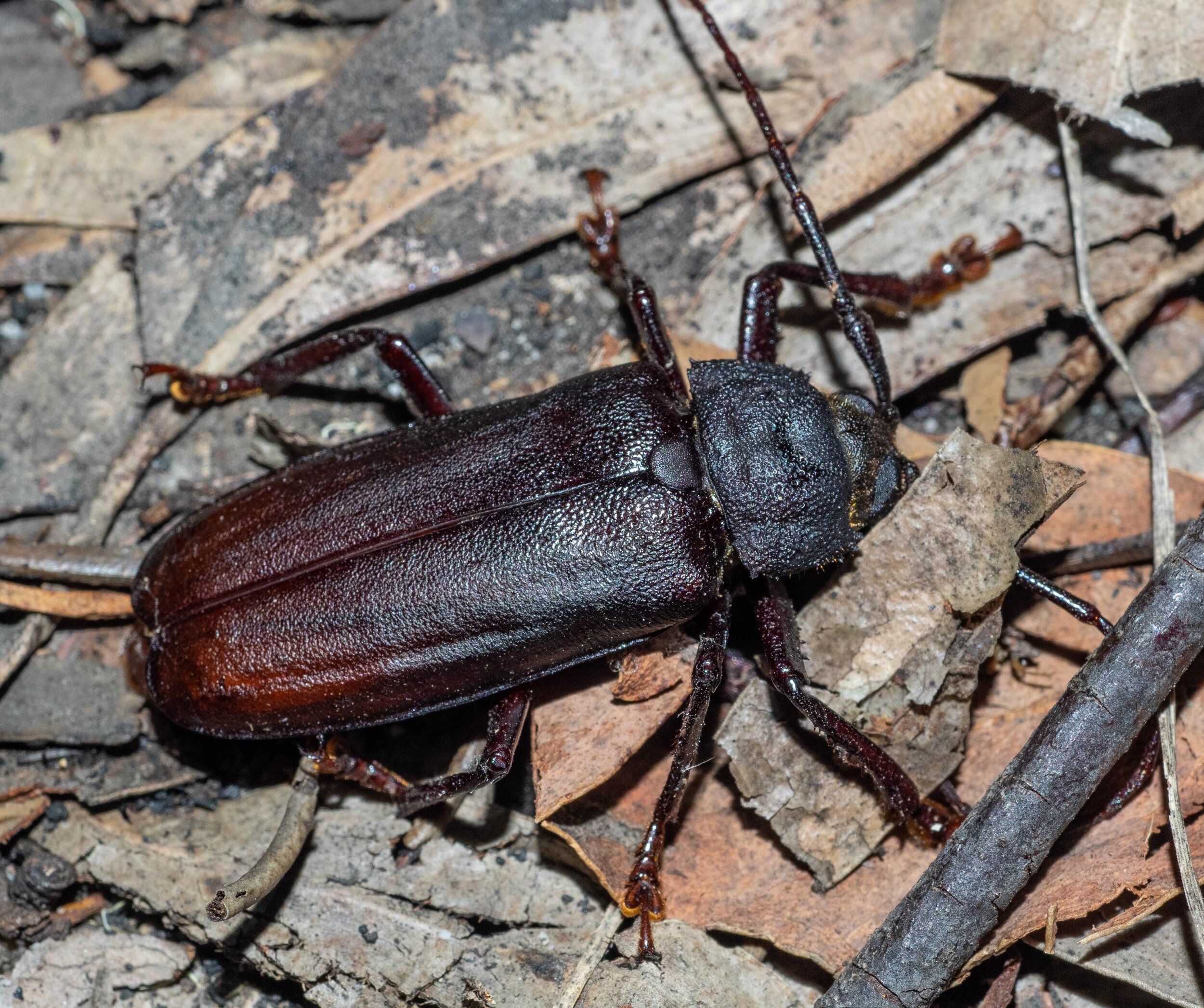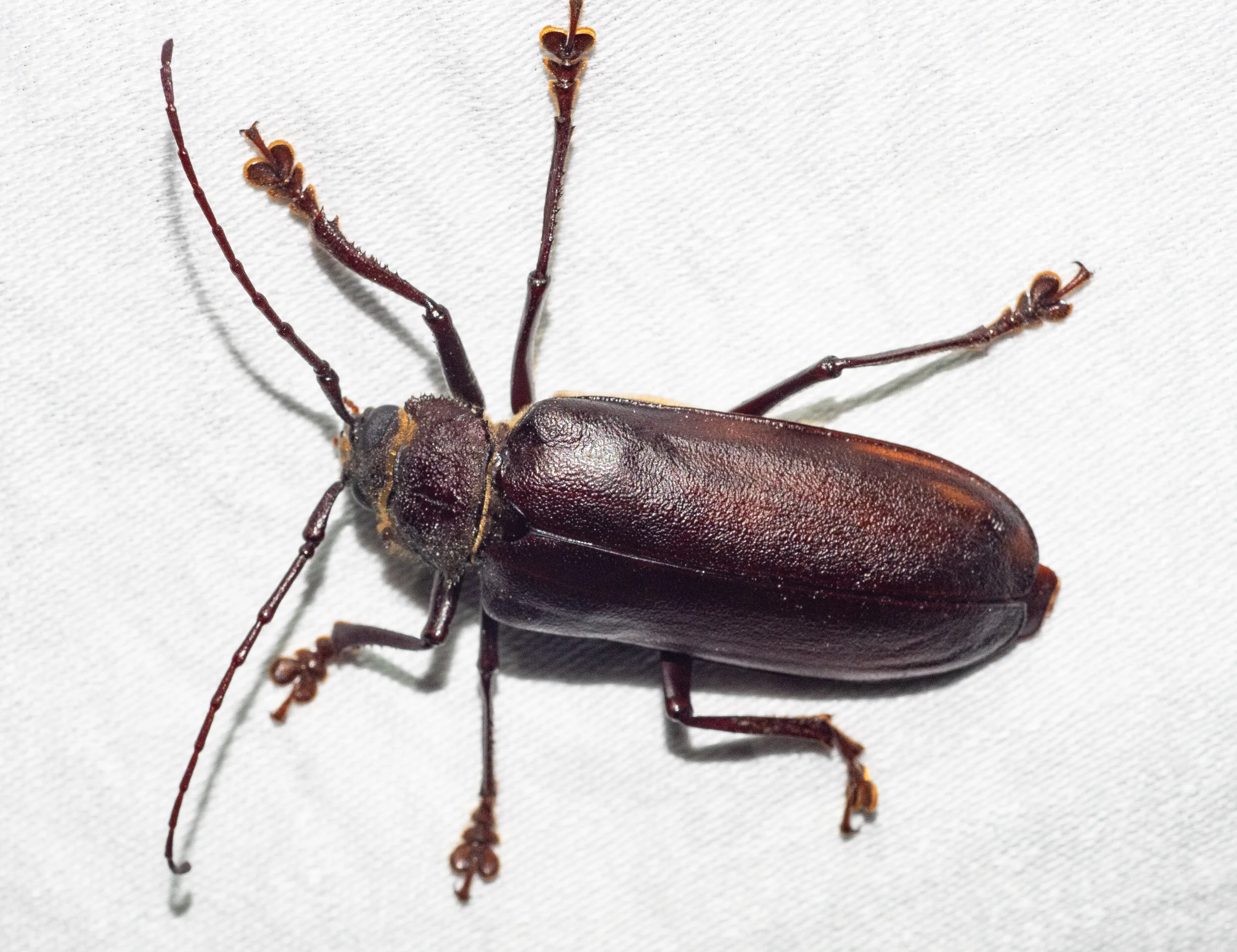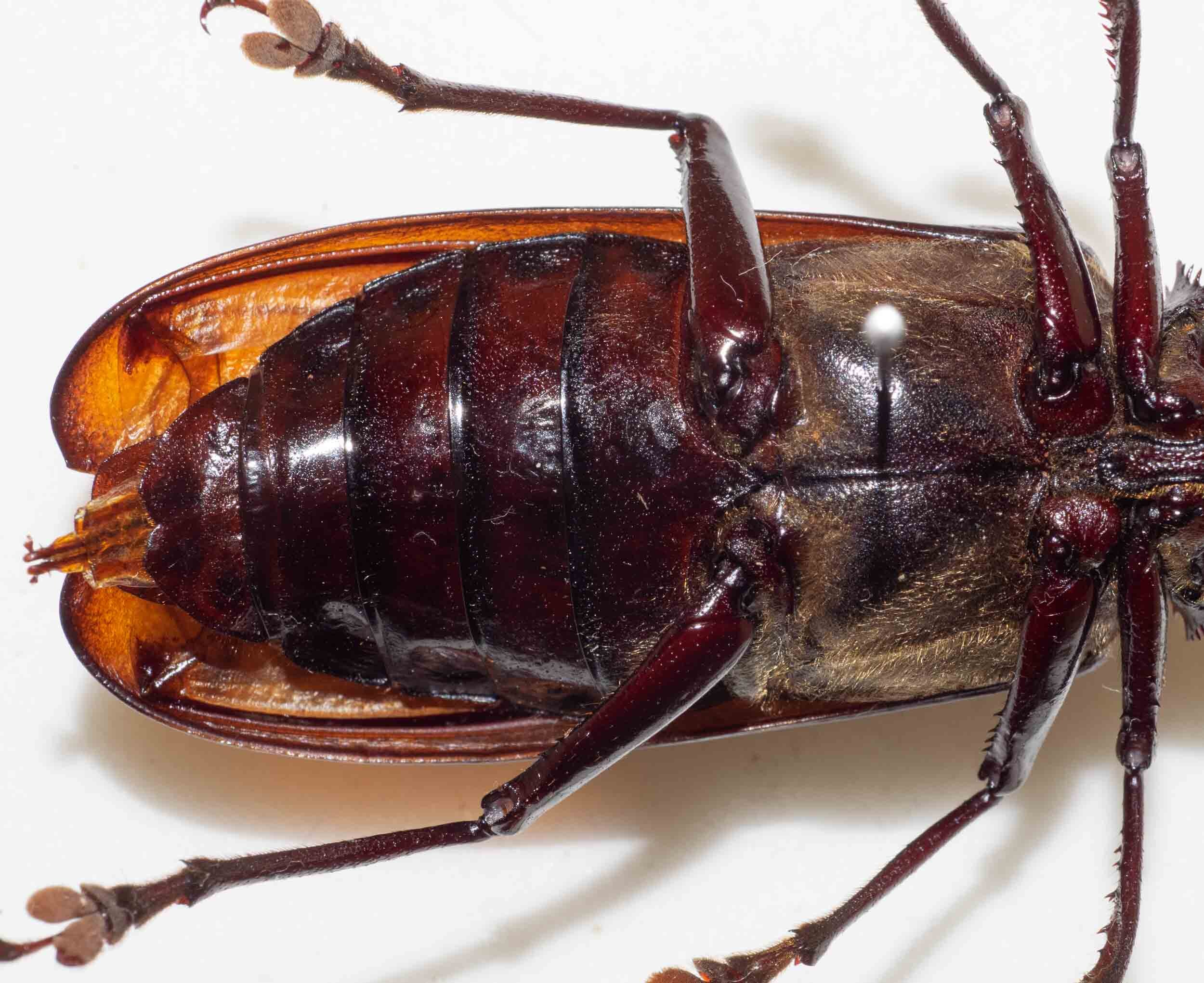Prioninae; Macrotomini: Cnemoplites

Workbook
Cnemoplites australis
I am confident that this is the correct identification.
Mated pair, recently uncoupled. Female left, male right.
January 2021 these large beetles were attracted to our moth light sheet – around 10 individuals on 12th and about 6 individuals on 14th (when we only ran lights until around midnight). Two beetles were also found near house, presumably attracted to house lights. We have not previously sighted these adult beetles, although we have certainly found very large Cerambycidae grubs in dead wood … these could have been Prionids.ip
Although the CSIRO/Slipinkski vols 1 & 2 don’t cover the subfamily Prioninae (it will be dealt with in the final volume, Vol 3), they did publish two very relevant papers in 2020. I was able to get hold of both.
Jin, M., de Keyzer, R., Hutchinson, P., Pang, H. & Slipinski, A. 2020. A review of the Australian Macrotomini (Coleoptera: Cerambycidae: Prioninae). Annales Zoologica (Warszawa), 70(1): 33-96
Jin, M., Zswick, A., Slipinski, de Keyzer, R. & Pang, H. 2020. Museomics reveals extensive cryptic diversity of Australian prionine longhorn beetles with implications for their classification and conservation. Systematic Entomology, 45: 745-770.
We collected 5 beetles on 14th and housed them in the buddy tank for a few hours. A pair mated, so we kept them and released the other 3.
The mated pair disengaged as we photographed them. We euthanised both soon after (15/1/21, in freezer). It was this pair that I used for measurements and identification, and pinned for further imaging and storage.
Note: our female measured 48mm long when alive, whereas the size range for C. australis is listed as 25-45mm (ref. 1). However the reported maximum of 45mm is based on dried, museum specimens … and now that I have killed and pinned our female she measures 45 mm!
Features used for identification
Macrotomini based on:
eyes shallowly or not emarginate near antennal insertions
mesotrochantin obviously exposed
metanepisternum broad
pronotum with lateral carina dentate
(plus strong resemblance to images in Ref 1.)
Cnemoptiles …
I can exclude 15 out of 16 genera on the basis of the following features:
C. australis …
The key is decisive, using objective / quantitative features.
Based on extract from Jin et al 2020, (Ref 1), page 50
The distribution is also a good fit, with verified specimens from nearby places such as Green Cape, Bawley Point, Bermagui, Broulee, Durras, Ulladulla and Lakes Entrance.
Extract from Jin et al 2020, (Ref 1), page 94
Euthanised (freezer) and then pinned (using additional pins to splay legs until set). Female on left. Scale bar blocks = 10mm
Female, imaged after death
Male, imaged after death
This is a workbook page … a part of our website where we record the observations and references used in making species identifications. The notes will not necessarily be complete. They are a record for our own use, but we are happy to share this information with others.





































